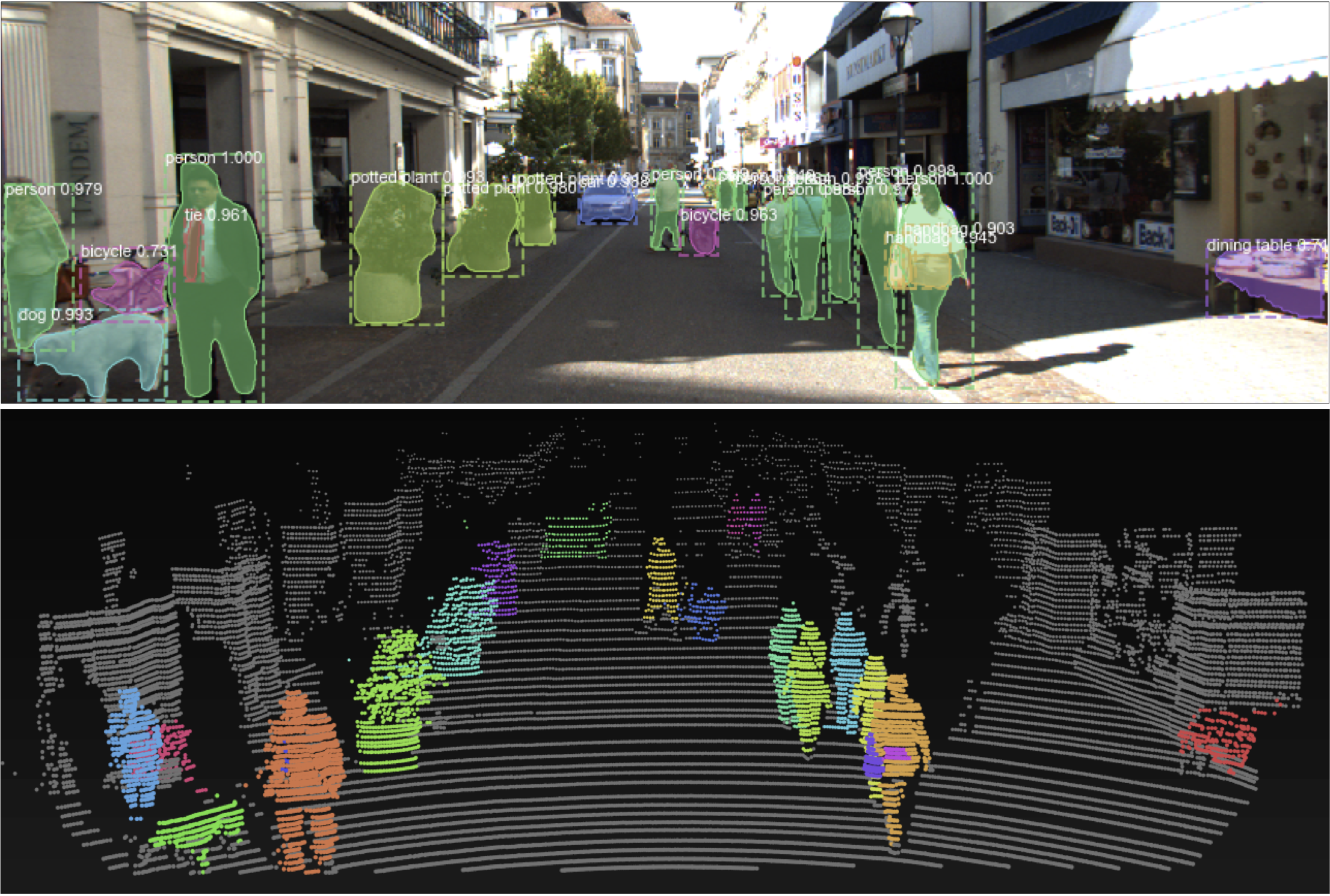LDLS performs 3D instance segmentation of lidar point clouds, by using a pretrained Mask-RCNN model to perform 2D segmentation of an aligned camera image, constructing a graph that connects 2D pixels to 3D lidar points, and then performing label diffusion to output final lidar point labels.
LDLS requires no annotated 3D training data, and is capable of performing instance segmentation of any object class that the 2D image segmentation model is trained to recognize.
For details on the algorithm, please see our paper, "LDLS: 3-D Object Segmentation Through Label Diffusion From 2-D Images" [On IEEE Xplore and arxiv], published in the IEEE Robotics and Automation Letters (to be presented at IROS 2019 in Macau).
Requires Python 3.6+
Depends on
- Matterport Mask R-CNN implementation
- CuPy for sparse matrix multiplication on the GPU
- Numba for speeding up graph construction using the GPU.
Installing dependencies using conda is recommended, in particular this makes it easier to install Numba with CUDA GPU support. Use the included environment.yml file:
conda env create -f environment.yml
The Point Processing Toolkit can also be useful for visualizing KITTI lidar point clouds:
pip install pptk
See the demo.ipynb Jupyter notebook for an example of how to use LDLS.
If you used conda to install dependencies, activate your ldls conda environment, then run the following command to create an iPython kernel which you can use with the Jupyter notebook:
ipython kernel install --user --name=LDLS
See the following videos for demonstrations of LDLS in action:
The manually-labeled ground truth KITTI instance segmentation data used in our experiments as available here. The 200 evaluation frames are found in gt_evaluation_val; the folder gt_evaluation_train contains 20 extra annotated frames which can be used for tuning parameters. For consistency with other related methods, validation and training splits are the same as those used in the Frustum PointNet and AVOD papers.
The Python annotation tool used to label the data is also available at: https://github.com/brian-h-wang/kitti-3d-annotator
Please consider citing our paper if these are useful to you.
From IEEE Xplore:
@ARTICLE{8735751,
author={B. H. {Wang} and W. {Chao} and Y. {Wang} and B. {Hariharan} and K. Q. {Weinberger} and M. {Campbell}},
journal={IEEE Robotics and Automation Letters},
title={LDLS: 3-D Object Segmentation Through Label Diffusion From 2-D Images},
year={2019},
volume={4},
number={3},
pages={2902-2909},
keywords={Three-dimensional displays;Two dimensional displays;Image segmentation;Laser radar;Sensors;Cameras;Task analysis;Object detection;segmentation and categorization;RGB-D perception},
doi={10.1109/LRA.2019.2922582},
ISSN={},
month={July},}
